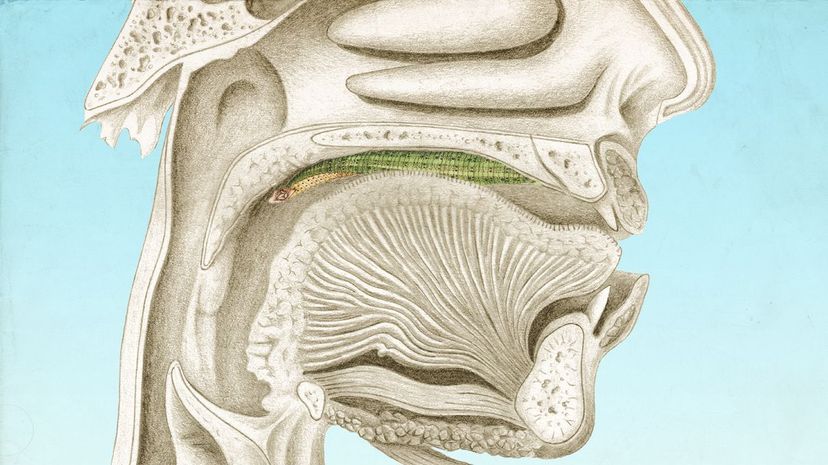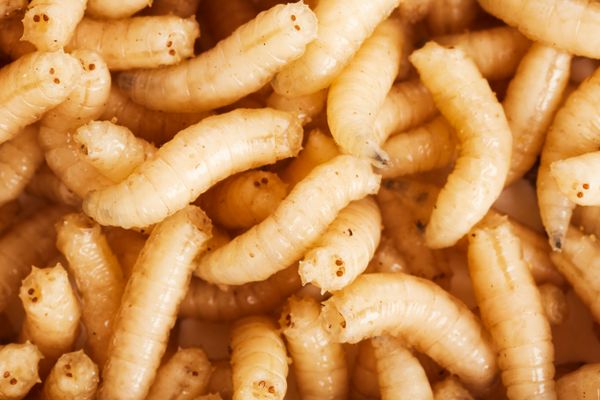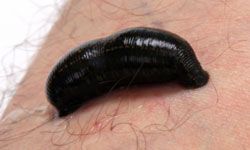
In 1895, Surgeon-Lieutenant T. A. Granger of the British Indian Army wrote a letter to the British Medical Journal to report a stomach-turning case of parasite infestation he encountered at his colonial outpost. While working at a fort in the North-West Provinces of India, Granger received a letter from an officer asking for his help with an unusual medical complaint. According to the note, a local man had a leech attached to the inside of his throat.
At first, Granger assumed it couldn't be true. Nevertheless, he agreed to see the patient. The person he encountered was, by Granger's account, an elderly Pashtun man with a gray beard. When Granger came within sight, the old man immediately spat out a heavy mouthful of thick, blackened blood, presumably to demonstrate that his complaint was real.
Advertisement
With the help of interpreters, Granger interrogated the man to learn about his condition. The questioning revealed that 11 days previous, the old man had been drinking out of a rainwater tank when he suddenly felt something catch in his throat. When he tried to cough it up, he couldn't. Then, the thing caught in his throat began to move. He had difficulty swallowing and felt like he was going to choke on the writhing obstruction, and it caused him to vomit and to spit up blood repeatedly.
When Granger first looked inside the old man's throat, he was able to remove a clot of blood, but couldn't see any parasites. If it was there, it had to be deeper. So the surgeon-lieutenant produced a pair of polypus forceps — essentially, very long tweezers with scissor-handles — and reached into the hidden depths of the man's lower pharynx, near the esophagus. There, he detected the presence of an object, and through the metal of his instrument, Granger could feel it moving. With the tips of the forceps, he grasped the squirming obstruction and "with considerable force" pulled it out.
Indeed it was a leech, between 2.5 and 3 inches (6.4 and 7.6 centimeters) long, with a body shaped like the .303-inch bullets the British infantry used in their Lee-Metford rifles. A slimy, writhing rifle cartridge, engorged with human blood, had been living in this man's pharynx for 11 days.
Granger's letter to the BMJ doesn't go on to report what happened to the old man, but after an experience like this, one would at least hope that the worst moment of the man's life was already behind him.
When it comes to leeches in the throat, Granger's report is not an isolated incident. Granger himself reports hearing stories of other cases like this in neighboring towns, and this phenomenon is by no means limited to 19th-century India. Getting a leech attached to the inside of a body cavity is common enough that there are special, medicalized terminologies for it, such as "leech endoparasitism" or "internal hirudiniasis." These are phrases most of us would probably rather not have in our vocabulary, but even today, in the 21st century, people still show up at hospitals around the world with leeches stuck inside their throats.
Meet the Leech
Strictly speaking, the leech is a worm — phylum Annelida, subclass Hirudinea, from which we get the word "hirudiniasis," which refers to the condition of being parasitized by a leech. Leeches have segmented bodies (imagine "rings," like an earthworm) and suckers at both ends: one large sucker at the rear of the body, used for crawling and leverage, and a smaller sucker at the front containing the jaws and the mouth. Not all leeches are blood drinkers. Some scavenge for detritus, and some are predatory hunters, but the leech we know best is that vampiric parasite that clamps onto a larger host and steadily drains all the blood it can, often until the leech's body has swollen to around 10 times its original size. In the wild, leeches drink from all manner of hosts, such as mammals, fish and amphibians.
When the leech bites, it makes a Y-shaped incision in the skin with three curved jaws covered in serrated teeth like tiny circular saws, and then extracts blood with a muscular sucking action. The saliva of the leech is known to contain a cocktail of drugs to ease the process, including hirudin, a polypeptide that prevents blood from clotting. Leeches are classically known as external parasites, drawing their liquid diet through the outer skin of the host, but given the opportunity, they will feed from internal surfaces, too, such as the nasopharynx, larynx, vagina, bladder and anus.
Humans have an unusual relationship with leeches that is perhaps unique among all the world's parasites. The use of leeches is pervasive throughout the history of medicine, even giving the European medical leech, Hirudo medicinalis, its modern name. In some historical periods, they were so commonly used as instruments of bloodletting that collecting wild leeches was a solid money-making operation.
Assuming you find the idea of being sucked by a leech disgusting, and assuming you find the idea of being sucked by a leech on the inside of your body even more disgusting, you might find it odd that the human taste for therapeutic parasitism does not stop at the outer skin. During the leech craze, leeching enthusiasts opened many of their bodily orifices and internal cavities to the prized worms, with the help of some ingenious medical technology. In a 2011 article on the technological history of leeching, Robert G.W. Kirk and Neil Pemberton write that "[t]he opening of the interior of the body often required the physical alteration of the leech, for example the attachment of thread to prevent the loss of the leech within, or the supplementation of the leech with mechanical tools to enable the passage of the creature into locations such as the anus where it was now recommended as a means to treat problematic prostates."
There are even a few limited ways in which leeches have proven useful, though perhaps still controversial, in the science-based medicine of recent decades, such as to ensure veins are working properly and aren't overfilling or distending after microsurgery.
Modern Cases
Here and there, you can still encounter reports in medical journals of rare cases of accidental internal hirudiniasis, including leeches in the throat.
In 2002, a group of doctors reported in the journal Pediatric Pulmonology the case of a 6-year-old boy in Syria who was brought to the emergency room because he couldn't breathe. His mother reported that he had been coughing up blood, and that a month ago a village doctor had diagnosed the boy with asthma and prescribed corticosteroids and bronchodilators. This turned out to be a misdiagnosis. The doctors were able to remove a 7-centimeter (2.8-inch) leech from the boy's airway through surgery, and subsequently discovered that the child had been drinking from a leech-infested stream in rural northern Syria. After the leech was removed, the boy's symptoms disappeared.
In 2009, another group reported in the European Journal of Pediatrics the case of an 11-year-old boy in central Iran who presented at a rural health care center with blood in his mouth and a sore throat that had lasted for two weeks. The boy had been given antibiotics for his sore throat, and the problem did not respond. Inspection of his mouth revealed a black, circular blob, about 2 centimeters by 3 centimeters (0.8 by 1.2 inches), stuck to the back of this throat, with blood oozing all around it. Doctors applied lidocaine spray (a topical painkiller) and then pulled the leech out with blunt forceps. Questioning revealed the boy had been swimming in a lake near his village. After the leech was removed, blood continued to ooze out of the wound for about an hour, but otherwise, the boy was all right.
In 2013, a doctor named Demeke Mekonnen published an article in the Ethiopian Journal of Health Science relaying the case of a 7-year-old boy in Ethiopia who presented with bloodstained saliva and shortness of breath. At his home, someone had tried to treat him with a traditional medicine made of tobacco leaves and flax seed, to no effect. In the report, Mekonnen indicates that the boy had contact with an unprotected source of spring water that was also used for watering animals. Laryngoscopy showed some kind of foreign body at the top of the trachea. The child was put under general anesthesia, and the leech was removed with forceps. After the extraction, the boy seemed to have a full recovery.
If a Leech Is in Your Throat
Laryngeal and pharyngeal leech infestations are rare these days, especially in developed countries with easy access to clean water, but it can still happen. Possible symptoms of a leech in the throat are difficulty swallowing, sore throat, vomiting blood, coughing up blood, a "sense of having a foreign body' in the throat, melena (dark, sticky feces, indicating the swallowing of blood), a feeling of suffocation or shortness of breath and stridor (harsh or raspy breathing).
If think you've got a leech in your throat right now, don't panic. Just see a doctor as soon as you can. As you may have gathered from the cases mentioned above, pharyngeal or even laryngeal hirudiniasis is not necessarily a death sentence, though it can be dangerous if the parasite obstructs any part of the airway. If the doctor knows what to look for and has a pair of blunt forceps on hand, chances are good that you'll be all right. But of course the best-case scenario is to avoid the problem entirely, which these cases seem to indicate you can do by drinking only from clean water sources or filtering and purifying all the water you use, and also by avoiding swimming in any water that may be infested with leeches.
Advertisement

